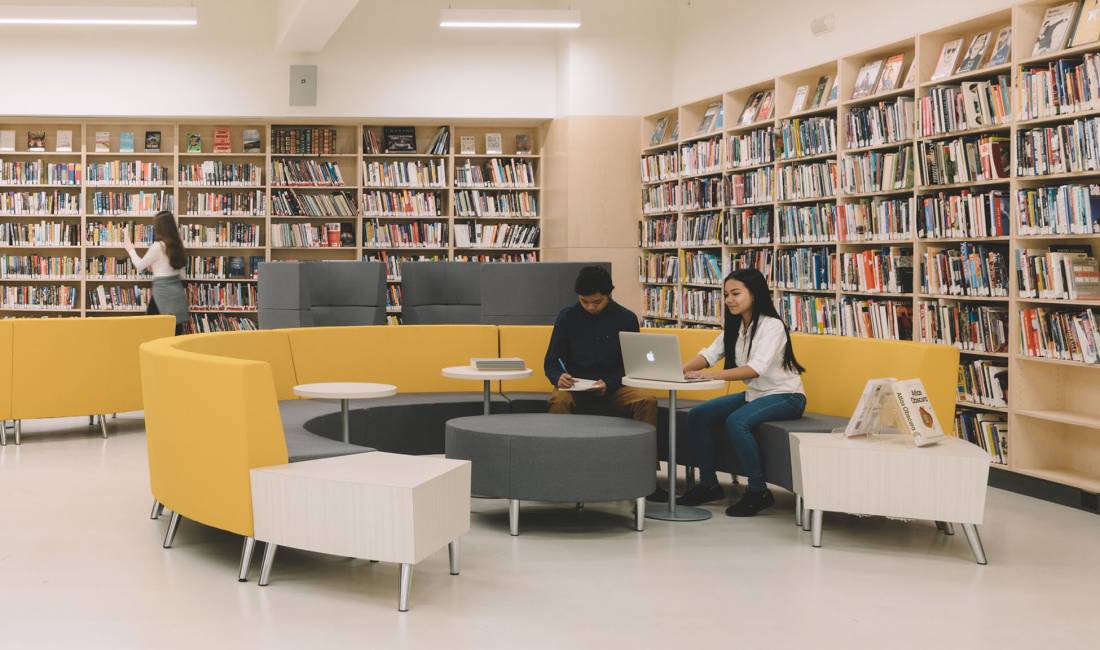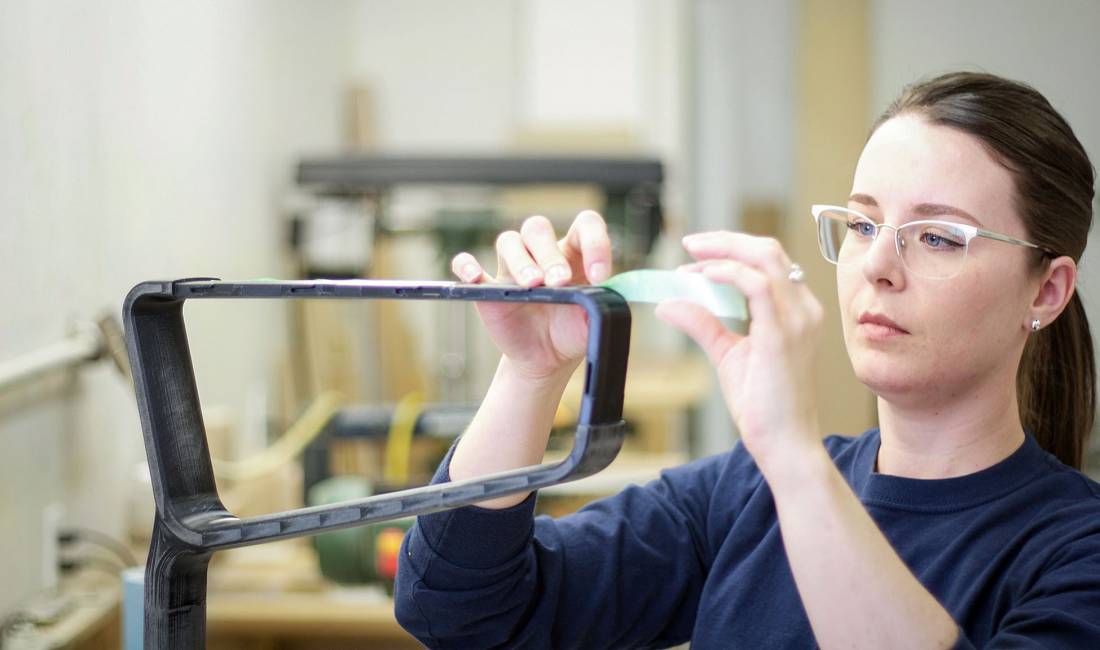Valuing people over paperwork: attracting and retaining staff in long-term care and nursing homes
Long-term care | July 07, 2022
Staff in long-term care (LTC) and nursing homes provide care and support for millions of seniors every day, but there are not nearly enough of them. In fact, it is estimated that 90% of nursing homes in the U.S. are currently understaffed.2
Low attraction and retention rates across the industry have created widespread staff shortages, increasing pressure on the remaining staff, and putting the health and safety of both residents and staff at risk. In fact, it is projected that the proportion of the population over 80 years old will double by 2050, and that there will only be two people of working age for each person over 65,1 reducing the labor pool and potentially worsening shortages.

Generally, LTC/nursing home staff are among the lowest paid for a given set of qualifications in the health care sector. They also face some of the most physically and mentally demanding work within the healthcare industry as the mean age of residents and the according morbidity rates of residents rise:
- 60%+ have faced physical risk factors
- 46% have faced high psychological stress
- 70% are undertrained or underqualified for the situations they face1
As residents age and have increasing acute care needs, there are less and less people to provide care. How do we address this issue and improve staffing in our LTC/nursing homes?

Making People a Priority
Irka Dyczok is the founder of Designfarm, a boutique, multi-disciplinary interior design firm that is a recognized leader in the Senior Living design sector. Energetic, empathetic and engaging, Irka is recognized for design solutions that meet the unique challenges of our time.
Her approach is to prioritize people by addressing their needs for a safe, productive, and supportive workplace. She explains, “It really isn’t different than any other workplace (like tech for example) where there is a staff shortage, and attraction and retention is a major issue.”
“In a care facility, [creating a supportive work environment] means ensuring staff are not an afterthought. That their needs have been considered and ways to make their workflow better are incorporated throughout the space."
– Irka Dyczok
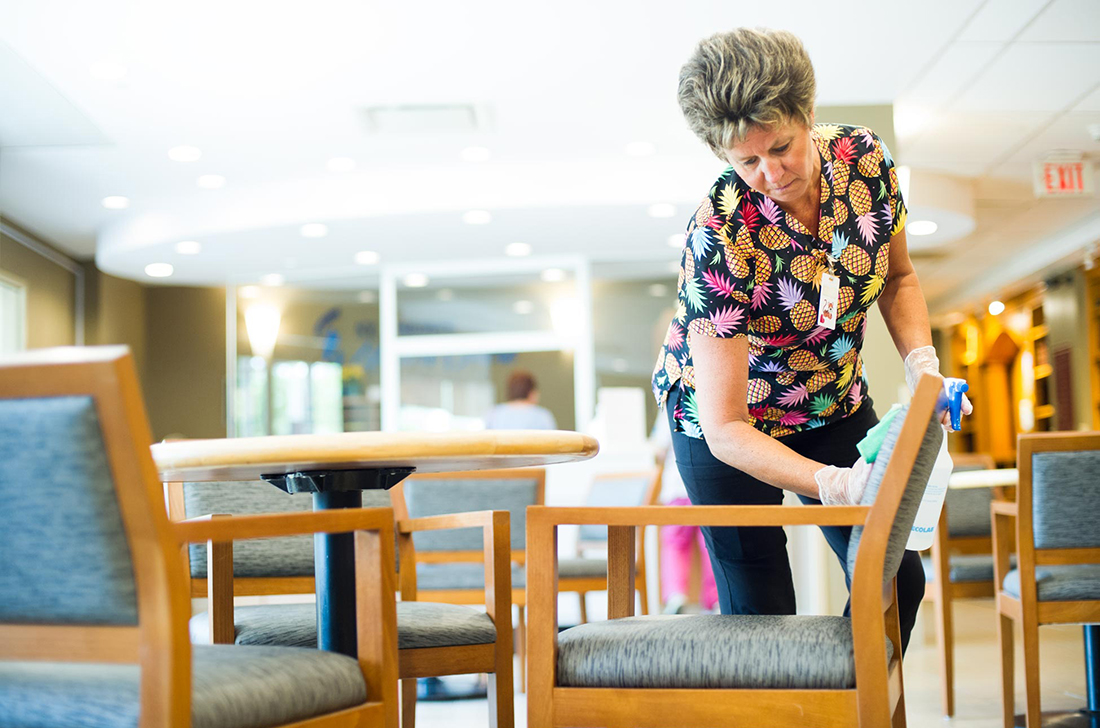
St. Joseph’s Lifecare Centre
1. A Supportive Work Environment
Creating a supportive work environment drives staff engagement, productivity, and can even become a competitive advantage in recruitment. Staff need to be shown they are valued.
But what does it mean to value your staff?
Many people will likely think it’s all about a dollar amount. However, value goes beyond compensation and benefits. Irka adds, “In a care facility, it means ensuring staff are not an afterthought. That their needs have been considered and ways to make their workflow better are incorporated throughout the space.”

2. Creating a Better Workflow
Designing better nursing stations that support privacy, paper storage and workflow can make a huge difference for staff and help improve productivity. It is important to plan for paper storage, privacy, and confidentiality.
Irka explains, “I always examine how charting is done. Because we may think we live in a paperless society, but staff still receive faxes from pharmacies, physicians etc., and paperwork can really pile up. Is there a space where focus and/or confidential work can be comfortably completed? It’s critical that these communication centers are designed to meet these needs.”

3. Mental and Physical Safety
The work environment in LTC/nursing Homes extends beyond paperwork. It is important to incorporate equipment and furnishings that help staff deliver care safely.
Deborah Bachly, Director of Business Development, Global Healthcare leverages her 25+ years of healthcare experience to improve the wellbeing of others. She explains, “There are many ways we can reduce the physical stress and strain staff experience in these care environments. Selecting the right product can make their work easier in addition to reducing risk and injury for both the staff and resident, like:
- Chairs that assist caregivers in moving residents in/out from tables
- Rear tip-and-move wheels to easily move chairs without any lifting and prevent staff injury
- Chairs specifically designed to facilitate safe patient transfer
- Push bars on recliners to help staff relocate and reorganize furniture
- Overbed tables that can be easily adjusted by residents and staff."
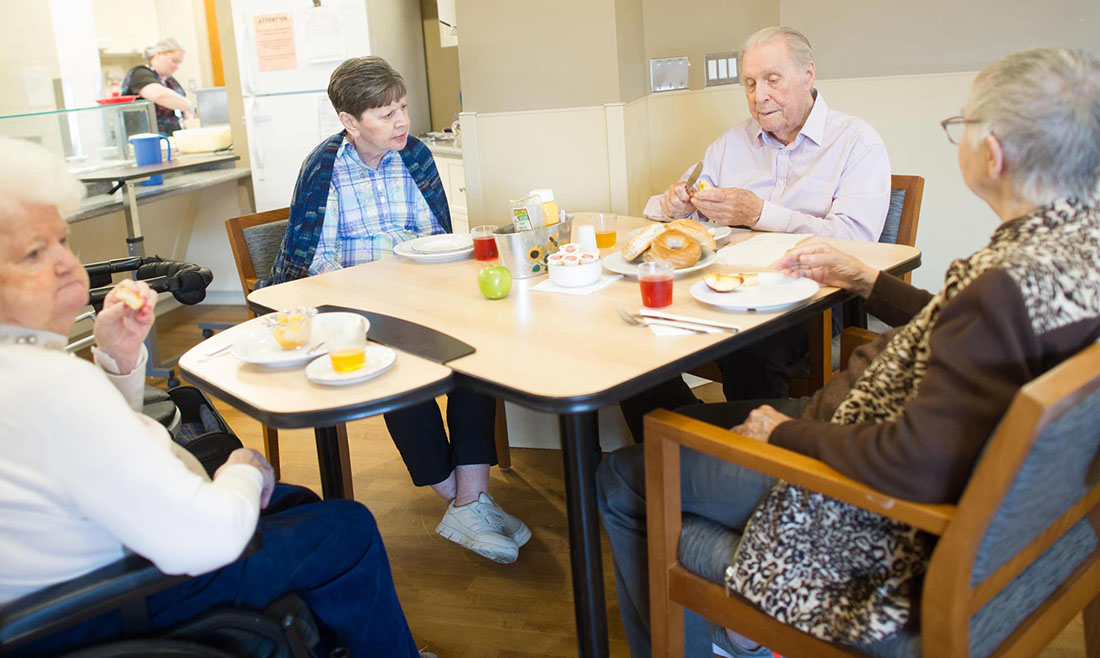

Parker Jewish Assisted Living Facility
In addition to physical health, emotional wellbeing should not be overlooked. Providing spaces that allow staff to refuel and recharge, or areas that allow for privacy to make or take personal calls are just as important.
Providing access to services such as daycare, dining facilities that allow [workers] to take food home, and access to spa services like hairstyling, may be powerful perks that could attract and retain top talent.
Irka explains, “It is not unusual for healthcare staff to be grabbing lunch in a storage room or a cramped, windowless break room with uncomfortable seating. Often times they bring their own lunch. They only have half an hour to eat lunch/dinner. They can’t or won’t go out to eat, so ensuring the home provides something as basic as microwaves and a proper full-size fridge to store their food makes a big impact.”
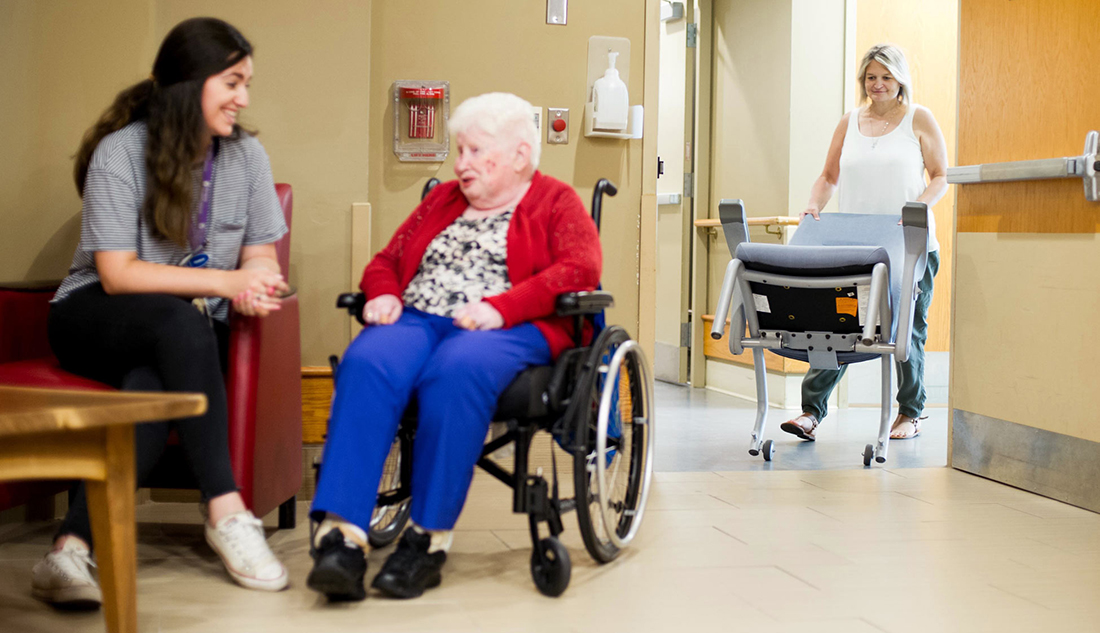
Could staff amenities be a future perk for LTC/Nursing Home staff?
It is common to see amenities used as an attraction and retention tool for the workplace and tech sectors—why not apply it to LTC/nursing homes?
A world-wide study of the LTC workforce found that across the board, staff were overwhelmingly women and mostly middle aged.1 Considering the demographic, amenities can be tailored to what this group’s wants and needs are. Providing access to services such as daycare, dining facilities that allow them to take food home, and access to spa services like hairstyling, may be powerful perks that could attract and retain top talent.

Grouping shared services at Whistle Bend Place such as a salon in the village center provides cost efficiencies and opportunities to socialize.
1OECD (2020), Who Cares? Attracting and Retaining Care Staffs for the Elderly, OECD Health Policy Studies, OECD Publishing, Paris, https://doi.org/10.1787/92c0ef68-en.
2Nursing Home Understaffing (2022-06-21). Nursing Home Abuse Guide.org https://www.nursinghomeabuseguide.org/neglect/understaffing
Enjoy this article? Don't forget to share.




